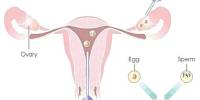Bacteria use a variety of tactics to fight off the medications designed to destroy them. Ribosome-modifying enzymes are one of these weapons that are most common. These enzymes are becoming more widespread, turning up in clinical samples from bacteria with various drug resistances all over the world.
Now, researchers have seen one significant family of these enzymes in operation for the first time. Images demonstrate how the enzymes attach to a specific location on the bacterial ribosome and squeeze it like a pair of tweezers in order to remove and modify an RNA nucleotide.
The Proceedings of the National Academy of Sciences (PNAS) published the findings, led by scientists at Emory University.
The advanced technique of cryoelectron microscopy made the ultra-high-resolution, three-dimensional snapshots possible.
“Seeing is believing,” says Christine Dunham, Emory professor of chemistry and co-corresponding author of the paper. “The minute you see biological structures interacting in real life at the atomic level it’s like solving a jigsaw puzzle. You see how everything fits together and you get a clearer idea of how things work.”
The discoveries could influence the development of novel antibiotic treatments that block the RNA methyltransferase enzymes’ drug-resistant activities. These enzymes carry out methylation, the process of moving a methyl group, a little hydrocarbon, from one molecule to another.
Knowledge of the shape of the enzyme as its performs its chemical reaction gives us new targets to inhibit its effects. For instance, we could target the pincer action of the enzyme to try to prevent it from squeezing and binding to the ribosome. We now know that the enzyme forms a pocket on its surface where a small molecule might sit to block this action.
Professor Graeme Conn
“Methylation is one of the smallest chemical modifications in biology,” says Graeme Conn, professor of biochemistry in Emory’s School of Medicine and co-corresponding author of the paper. “But this tiny modification can fundamentally change biology. In this case, it confers resistance that allows bacteria to evade an entire class of antibiotics.”
Both Conn and Dunham are also members of the Emory Antibiotic Resistance Center.
First author of the paper is Pooja Srinivas, who did the work as a PhD candidate in Emory’s graduate program in molecular and systems pharmacology. She has since graduated and is now a postdoctoral fellow at the University of Washington.
Dunham is a world authority on the ribosome, a complex organelle that works like a factory inside a cell to produce proteins. Nucleic acids, such as DNA and RNA, hold the instructions for life, whereas proteins are the machinery that keeps cells functioning. The majority of the ribosome is composed of RNA, which has the ability to catalyze chemical reactions in addition to serving as a data storage medium.
One goal of Dunham’s lab is to find ways to manipulate bacterial ribosomes to make them more susceptible to antimicrobials. The production of proteins necessary for bacterial growth and survival stops if an antibiotic is successful in inactivating bacterial ribosomes.
In order to ensure that an antimicrobial medicine solely affects bacteria, it is intended to take advantage of distinctions between human cellular ribosomes and bacterial ribosomes.
Antimicrobials, however, need to get past bacterial defenses.
“It’s like a molecular arms race,” Dunham explains. Bacteria keep evolving new weapons as a defense against drugs, while scientists evolve new strategies to disarm bacteria.
Conn is a world authority in the ribosomal RNA methyltransferase enzymes, which are a class of bacterial defense mechanisms. In soil microorganisms, this family of enzymes was first identified. These diseases are becoming more difficult to cure as they are now more frequently discovered in bacterial illnesses in both humans and animals.
“They keep turning up more and more often in clinical samples of some nasty bacterial pathogens in different parts of the world,” Conn says.
The enzymes can drive deadly drug-resistance in pathogens such as E. coli, Salmonella, Klebsiella pneumoniae, Pseudomonas aeruginosa and Enterobacteriaceae. On the bacterial ribosome, the enzymes add a methyl group at a certain location. This modification prevents an antibiotic family known as aminoglycosides from binding and exerting its antibacterial effect.
For the PNAS paper, the researchers focused on a culprit within this family of enzymes known as ribosomal RNA methyltransferase C, or RmtC.
For many years, scientists have depended on a method called X-ray crystallography to provide atomic-level information about how molecular machines function when the molecules are grouped in a crystal.
In 2015, for example, Dunham’s lab obtained precise pictures through X-ray crystallography of how an enzyme known as HigB rips up RNA to inhibit growth of the bacteria. By restraining the growth of the bacteria that makes it, HigB establishes a dormant “persister cell” state that makes the bacteria tolerant to antibiotics.
The secrets of how the RmtC enzyme interacts with the ribosome, however, eluded X-ray crystallography.
“RmtC is much more complicated,” Dunham explains. “It’s an interesting enzyme from a basic science perspective because it looks so different from others.”
Recent advances in cryoelectron microscopy opened the door to zooming in on the complex mechanisms of RmtC.
Crystallization is not necessary for cryoelectron microscopy to display the structures of molecules and their interactions. Instead, quick freezing of liquid samples creates a glassy matrix. The glassy matrix preserves the molecules’ three-dimensional structure and guards against the damaging effects of the powerful electron beam.
Meisam Nosrati, a former postdoctoral fellow in the Conn lab and a co-author of the PNAS paper, prepared samples of RmtC interacting with part of an E. coli ribosome. He tapped the expertise of co-author Lindsay Comstock, a chemist at Wake Forest University who developed a technique to trap and stabilize the enzyme in the needed position.
Nosrati then froze the samples on a tiny grid and sent them to the Pacific Northwest Center for Cryo-EM for imaging.
As a graduate student in the Dunham lab, Pooja Srinivas then analyzed and interpreted the microscopy dataset. She used computer algorithms to stitch together thousands of individual images. The result turned the images into a flipbook that revealed the complicated structure of RmtC in action.
“The enzyme latches on like a pincer to the ribosome,” Dunham explains. “It tightens its grip until it squeezes out a nucleotide from the interior of an RNA helix. It then chemically modifies that nucleotide.”
The enzyme is exquisitely specific about where it binds to the ribosome, a huge macromolecule made up of 50 different proteins and 6,000 different RNA nucleotides.
To confirm that what they saw matched prior research on how RmtC confers bacterial resistance to aminoglycoside antimicrobials that target the ribosome, the researchers used biochemistry techniques.
The researchers are now trying to develop new ways to counter the effects of RmtC and related enzymes based on the new information.
“Knowledge of the shape of the enzyme as its performs its chemical reaction gives us new targets to inhibit its effects,” Conn says. “For instance, we could target the pincer action of the enzyme to try to prevent it from squeezing and binding to the ribosome. We now know that the enzyme forms a pocket on its surface where a small molecule might sit to block this action.”
Additional co-authors of the PNAS paper are Natalia Zelinskaya and Debayan Dey, research scientists in the Conn lab.
The National Institutes of Health and the Burroughs Wellcome Fund Investigator in the Pathogenesis of Infectious Disease Award provided funding for the work.
















